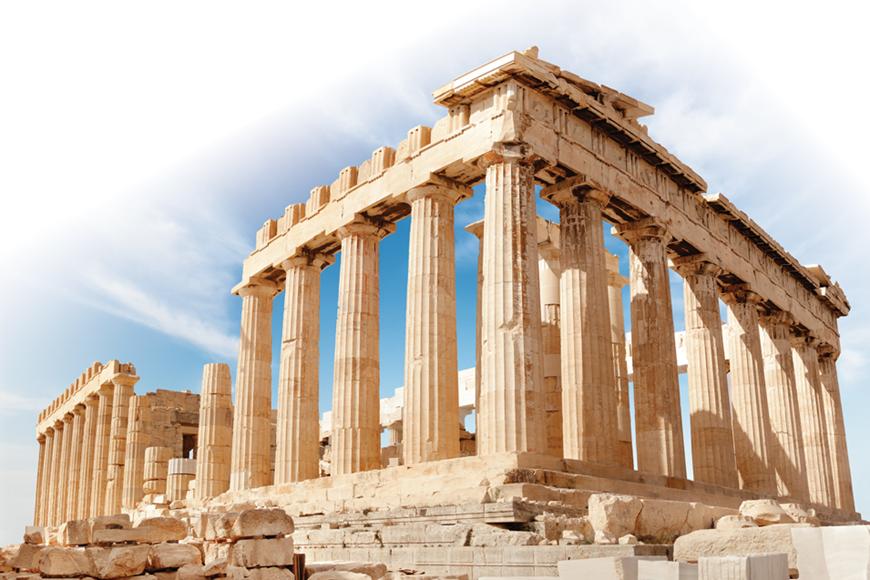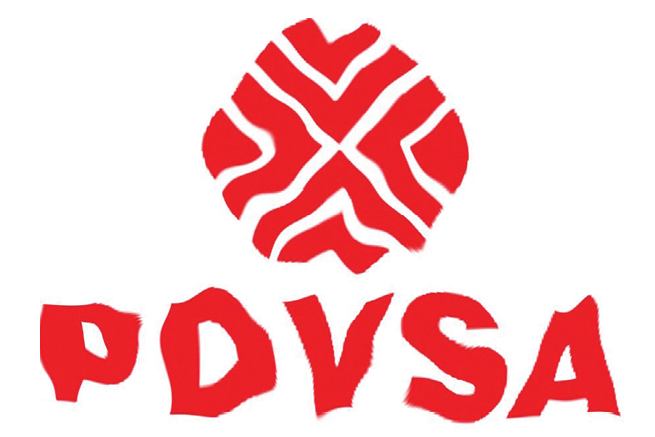Before the Storm
Venezuela’s PDVSA 1998

Looking at the ruins of the Parthenon today, perched high on the Acropolis of Athens, it is difficult to imagine that those pollution-tainted marbles were once the pinnacle of a civilization that gave us the principles of philosophy, mathematics, logic and democracy. On any given day, the multitudes of tourists that visit the site each year need to close their eyes and mute the city noises of today’s Athens and imagine the Parthenon as it was to be able to picture Pericles addressing the Athenians.
In this essay, I will go back in time and, with the benefit of hindsight, try not only to describe what PDVSA was like in its heyday but also to identify virtues and flaws. Since I spent 16 years of my professional life in PDVSA, my views are not entirely devoid of bias and opinions, but I have done my best to err on the side of truth as I see it rather than try to be neutral.
I have chosen PDVSA in the year 1998 as the “family portrait” from which to derive the analysis. This is the year in which Hugo Chavez, then a retired army officer and a failed putschist, was elected as president of Venezuela in a runaway election. One might argue that 1998 was the last year in which PDVSA enjoyed relative independence from political interference, and the beginning of the downward slope that has taken the company to the dire straits in which it finds itself today.
The Nationalization
Before we look at 1998, let us briefly jump back to 1975, the year in which the then president of Venezuela, Carlos Andrés Pérez, in an environment of high oil prices, pushed legislation through Congress to nationalize the oil industry and expropriate the private companies that had operated the industry since its inception at the beginning of the 20th century. At the time, the little-known truth to Venezuelans was that the country’s oil production was in decline and significant new investment was needed to recover the dynamics of the industry. As a result of the nationalization process, PDVSA was created as a holding company to manage all oil-related operations in Venezuela.
Ramon Espinasa, PDVSA’s former chief economist and now an industry analyst, argues that the reasons behind the successful transition and the consolidation and growth of the national oil industry are many, but the most important are as follow:
- PDVSA, although a state-owned company, was subject to private law – a corporation whose shares were the property of the nation. Being under private law, PDVSA and its subsidiaries were subject to the Commercial Code, with the transparency and accountability safeguards that this entails. The distant relationship ensured that the government had no direct interference in the operation of the company.
- At the time of nationalization, it was decided to keep the structures of the transnational companies that operated in the country, which became PDVSA’s affiliates. In the same way, the systems of checks and balances were maintained to ensure the transparency of the national corporations. These structures were gradually merged until, in late 1997, there was only one operating company.
- By 1975, almost all the personnel, at different levels, were Venezuelan. The nature of a private law company allowed PDVSA and its affiliates to ensure competitive salaries with the international oil industry and thus preserve the most qualified personnel, at least in the initial stages.
- PDVSA was allowed to retain the net after-tax earnings to finance its investments. Also, a legal reserve of 10 percent of annual gross income was established to fund PDVSA’s expenditures. The company was able then to grow steadily, financing its investments and paying taxes similar to those paid in other oil countries.
In 1975, the Venezuelan oil industry produced 2,346 thousand barrels per day, down from a production peak of 3,708 in 1970, and crude oil reserves were of the order of 18,390 million barrels. It had four large refineries built by the foreign oil companies during the 1940s and ‘50s to process light and medium oils that would satisfy the residual fuel oil market of the Eastern Atlantic Coast of the United States but were not adequate for the changing transportation market.
Fast Forward
PDVSA circa 1998 is a proxy for the evolution of the Venezuelan oil industry since its nationalization. This is a loose analogy, as numbers are a poor representation of an organization’s people, its strategy and its execution, but it gives at least a fair sense of the company and its dynamic at that juncture in time.
In 1998, Venezuela’s production was 3,279 thousand barrels per day of crude oil, 170 thousand barrels per day of liquefied petroleum gas and 3,965 million cubic feet per day of natural gas, which amounts to a total output of 4,133 thousand barrels per day of oil equivalent, out of reserves of 76,108 million barrels of crude oil and 146,573 billion cubic feet of natural gas – a significant increase compared to 1975.
Equally, in 1998 PDVSA had a net crude oil refining capacity of 3,096 thousand barrels per day, of which 1, 620 thousand barrels per day were in Venezuela (including Isla Refinery in Curaçao), 1,222 thousand barrels per day in the United States and 252 thousand barrels per day in Europe; this was the result of PDVSA successfully pursuing, during the ‘80s and ‘90s, the so-called “Internationalization Strategy.” The strategy called for the acquisition of refining capacity in principal markets to ensure collocation of its increasing volumes of medium and heavy oil, while in parallel investing heavily in Venezuela to transform its refineries to eliminate residual fuel oil and increase production of high-quality white products, as the world’s market demanded.
The CITGO group of refineries in the United States (nine refineries), Nynas Petroleum in Swede, Belgium and the UK and Ruhr Oel in Germany, formed a valuable set of assets: 45 percent of crude oil exports and 85 percent of the Venezuelan heavy oil was processed in these refineries.
By 1998, PDVSA was on the road to becoming an energy company, long before such denominations were in vogue: first, the government had assigned to PDVSA the management of the troubled national petrochemical industry and later the control of the coal mines on the western side of Venezuela. Also, PDVSA had finally created an affiliate exclusively dedicated to the development of the natural gas industry, and through the use of proprietary technology, Orimulsion, had developed a niche market of under-boiler fuel based on a portion of its vast heavy hydrocarbons resources in the Orinoco Belt.
All of this evolution required technology and well trained personnel. The technology was the responsibility of the Venezuelan Institute of Petroleum Technology, or INTEVEP, the research laboratory that registered more than 300 patents between 1976 and 1999, and employed around 160 researchers with doctorates and more than 200 with master’s degrees by 1998. The training and education were carried out mainly by the International Center for Education and Development, or CIED, an educational institution that evolved to become a corporate university, and had the capacity to cater to 2,000 people per day, providing a wide range of courses through all of its sites across the nation, from basic technical training to advanced executive education.
In the ‘90s, with the blessing of the government, PDVSA designed and executed the “Apertura Strategy,” namely, devising business models that would allow for the participation of private capital in the development of upstream projects as well as involvement in the internal market distribution chain. The business models took many forms: operational contracts for marginal fields, profit sharing contracts for risk exploration and joint ventures for the development of integrated projects for the Orinoco Belt.
By 1998, this strategy had attracted 55 companies from 18 different countries, including 12 Venezuelan companies, collecting U.S. $2 billion ($3 billion in today’s money) in signing bonuses and commitments to invest up to $20 billion until 2001 ($30 billion today). As a result, PDVSA awarded or created 33 operating contracts, four joint ventures in the Orinoco Belt, eight profit sharing risk exploration contracts, as well as multiple foreign and Venezuelan companies participating in the lubricants and gasoline retailing business. The strategy encompassed a veritable cornucopia of actors and investments that permitted the nation to envision a bright future in synchrony with its abundant hydrocarbons resource base.
An Illusion Shattered
By 1998, PDVSA’s long journey since its inception was, by most accounts, a success. However, its technical and commercial evolution was not entirely celebrated within a country that felt the oil industry continued to be privileged territory. The OPEC quota policy, for example, was always a contentious issue between Venezuela’s oil ministry and the company technocrats. Other, more significant sources of irritation were oil workers’ salaries and benefits; the isolation of the industry from general society – in particular, from the communities in operational areas; the discussion around the investments overseas; and, importantly, the controversy surrounding the growing role of foreign capital in the upstream side of the business. To be sure, this irritation was not limited to politicians – it extended to academics, business people and the general public.
PDVSA managers were raised in a culture that strove first and foremost for technical prowess and, in hindsight, were ill-equipped to be sensitive to the possible political nuances of their activities and decisions. In modern management speak: PDVSA was not very adept at managing its stakeholders. In turn, paradoxically, society at large cared very little about understanding the business of the oil industry, so long as it was generating enough revenue for the country to share.
When Hugo Chávez came into office in 1999, in an environment of low oil prices, he did not arrive alone. He brought with him a prejudiced opinion of the oil industry and its workers, borne of years of tension and misunderstanding, as well as a cadre of advisers made of PDVSA’s historical adversaries. Not surprisingly, the PDVSA establishment was apprehensive about its new political masters. The two forces were bound to clash sooner or later, and after some skirmishes, the tensions exploded destructively in the widely reported but little understood PDVSA crisis that boiled up in the spring and winter of 2002.
After 20 years, little remains of the PDVSA described here. As a Venezuelan, I still struggle between the sadness of paradise lost and the realization that the utopia was flawed and that the loss was inevitable. State-owned enterprises are prone to failure, either through inefficiency or as victims of political meddling, and PDVSA turned out to be no exception.
In Athens, the ruins of the Parthenon bear witness to a bygone golden age. In Venezuela, the possibility of progress that once was its oil industry is almost impossible to identify among the rubble in a country entangled in political and economic turmoil. Venezuelans seem to have forgotten the principles that guided their aspirations and dreams for decades and are now being forced to deal with a world of shattered illusions.
A history-based series, Historical Highlights is an ongoing EXPLORER series that celebrates the "eureka" moments of petroleum geology, the rise of key concepts, the discoveries that made a difference, the perseverance and ingenuity of our colleagues – and/or their luck! – through stories that emphasize the anecdotes, the good yarns and the human interest side of our E&P profession.





No comments:
Post a Comment